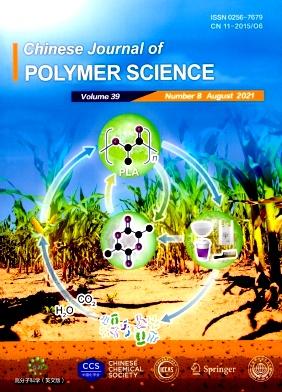Structural Difference in the Core-forming Block Reshapes RAFT-mediated Polymerization-induced Self-assembly
Abstract
Polymerization-induced self-assembly (PISA) has become one of the most versatile approaches for scalable preparation of linear block copolymer nanoparticles with various morphologies. However, the controlled introduction of branching into the core-forming block and the effect on the morphologies of block copolymer nanoparticles under PISA conditions have rarely been explored. Herein, a series of multifunctional macromolecular chain transfer agents (macro-CTAs) were first synthesized by a two-step green light-activated photoiniferter polymerization using two types of chain transfer monomers (CTMs). These macro-CTAs were then used to mediate reversible addition-fragmentation chain transfer (RAFT) dispersion polymerization of styrene (St) to prepare block copolymers with different core-forming block structures and the assemblies. The effect of the core-forming block structure on the morphology of block copolymer nanoparticles was investigated in detail. Transmission electron microscopy (TEM) analysis indicated that the brush-like core-forming block structure facilitated the formation of higher-order morphologies, while the branched core-forming block structure favored the formation of lower-order morphologies. Moreover, it was found that using macro-CTAs with a shorter length also promoted the formation of higher-order morphologies. Finally, structures of block copolymers and the assemblies were further controlled by changing the structure of macro-CTA or using a binary mixture of two different macro-CTAs. We expect that this work not only sheds light on the synthesis of block copolymer nanoparticles but also provide important mechanistic insights into PISA of nonlinear block copolymers.

 求助内容:
求助内容: 应助结果提醒方式:
应助结果提醒方式:


